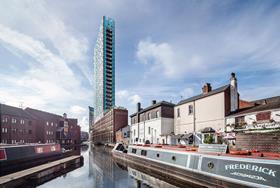
WWW.INFORMATIONWEEK.COM
Who Makes the Best Citizen Developers?
Lisa Morgan, Freelance WriterMarch 26, 20257 Min ReadJacob Lund via Alamy StockLow-code/no-code platforms have given rise to the citizen developer -- a power user of tools such as Microsoft Excel. In other cases, this person tends to be someone who needs an immediate solution, has an idea in mind, and isnt afraid to try something new to turn their dream into a reality.Citizen developers arent a threat to professional developers because they dont understand software architecture and the hand-written code it would take to customize the app. Theyre simply a less expert member of the workforce who happens to understand the context of a task, workflow or technology, and are motivated to make improvements on their own.In many cases, citizen developers arent left to their own devices. Theyre using wizards and visual tools instead of writing lines of code. In some organizations, citizen development has been enabled by IT and developers in a way that benefits both professional and citizen developers.For example, a citizen developer might build a solution that may eventually need a professional developers expertise to take it to the next level. The beauty of the center of excellence approach is that professional developers can spend more time on difficult problems while citizen developers solve the simple ones. If the organization has standardized on a platform, then handoffs between citizen developers and professional developers are seamless. It is common, however, for enterprises to use more than one low-code/no-code solution.Related:The best citizen developers have some traits in common, though their roles may differ. A proactive mindset and a love of learning help.Traits of An Effective Citizen DeveloperBrett Smith, distinguished software developer at data and AI provider SAS, believes effective citizen developers are usually subject matter experts on the business problem and possess a basic understanding of programming concepts. They are also problem solvers who are self-motivated and have a growth mindset. Notably, they can learn new skills quickly and are not afraid to experiment with new technologies.Citizen developers have a deep understanding of the business problem and the domain. They [can] communicate effectively with IT teams, which helps to ensure the solutions they develop are aligned with the needs of the business, says Smith. It's critical that enterprises provide citizen developers with the tools and resources they need to be successful. This includes access to training and support, as well as creating a culture that encourages innovation and experimentation.Related:Brett Smith, SASBrett Smith, SASNick Vlku, VP of product growth at end-to-end AI search and discovery platform provider Algolia, says citizen developers hold different roles such as product managers, project managers, designers and analysts, to name a few. One common trait is that they're intensely solution-oriented with an intrinsic drive to tackle business challenges, he adds.I've witnessed this firsthand, like watching a non-technical product manager who taught themselves SQL simply because they needed better answers to their data questions, says Vlku. These individuals are natural problem solvers who take initiative. Rather than waiting for help, they actively search for no-code solutions or teach themselves low-code approaches they find online.Their ability to focus on solving the problem at hand will become even more valuable with the rise of AI-assisted development tools and coding applications, Vlku says.Citizen developers will naturally incorporate these advances as additional tools to help them achieve solutions more efficiently, says Vlku.However, the enterprise also has a role to play. Vlku says enterprises should actively support and cultivate citizen developers, as they represent highly valuable employees who prioritize efficient problem-solving.Related:There's a notable challenge: these individuals often undervalue their technical capabilities, placing software engineering on a pedestal that makes them doubt their own abilities or feel uncomfortable embracing their problem-solving approaches, says Vlku. Organizations need to take specific actions to nurture this talent.First, enterprises should explicitly recognize and reward this initiative during performance reviews, acknowledging the solutions delivered and the innovative approaches used to achieve them. Second, they should streamline access to necessary tools and platforms.While determined citizen developers might find ways around organizational barriers, removing these obstacles upfront will encourage more employees to step into this role, says Vlku. This support is particularly important because citizen developers tend to doubt their technical legitimacy despite their demonstrated ability to deliver solutions. By creating an environment that actively validates and enables their efforts, organizations can help overcome this self-doubt and expand their pool of effective citizen developers.Karl Threadgold, managing director at Oracle NetSuite provider Threadgold Consulting, says the most effective citizen developers tend to have four defining traits: a problem-solving mindset, a strong understanding of business operations, a willingness to collaborate with IT and a hunger for learning.The most successful citizen developers deeply understand their organizations workflows, pain points and inefficiencies. They dont just automate processes for the sake of it; they focus on solving real business challenges, says Threadgold. Rather than working in isolation, they engage with IT teams to ensure their solutions are scalable, secure and aligned with governance policies. Given how quickly no-code and low-code tools are evolving, top citizen developers continuously upskill to stay ahead.The reason successful citizens outperform their peers is that they create solutions that are technically sound and strategically relevant.They dont just build the bare minimum, says Threadgold. They go above and beyond and build what the organization needs to thrive. Their ability to communicate with IT teams also helps prevent shadow IT issues, ensuring their applications integrate seamlessly into the broader tech landscape.The enterprise also has a role to play here, which is enabling this broader base of problem-solvers.Many enterprises still take a passive approach to citizen development. [They assume] that providing access to low-code tools is enough -- it's not, says Threadgold. They need to provide clear training structures, chances for people to work alongside experienced developers, and have clear collaboration frameworks in place. These people are often hungry to learn and develop their skills, so enterprises need to put structures in place to help them thrive. Without clear governance, training and collaboration frameworks, businesses risk ending up with fragmented, unsustainable solutions.How Citizen Development Is EvolvingAI capabilities have been added to all types of software, including low-code/no-code platforms. According to SASs Smith, adding AI helps citizen developers solve more complex problems. It also helps them write more code, faster -- but its double-edged sword.The increase in the amount of code a citizen developer produces could introduce more bugs and vulnerabilities than normal. There is a risk of overwhelming test and security teams with sheer volume of code to review and test, says Smith.Fundamental skills in AI, security and testing will support citizen developers in creating better applications and help avoid the introduction of bugs and vulnerabilities. Additional skills in project management and communication aid citizen developers in working effectively with IT teams to ensure that solutions are aligned with business needs.Algolias Vlku believes citizen development is still at the innovators stage.The proliferation of low-code and no-code tools is helping those without technical backgrounds bring their areas of search expertise directly into search platform development with less reliance on developers and engineers, says Vlku. Gen AI tools may also be accelerating this trend. Eventually, we foresee pre-built agents will be prepared and ready to support development, and citizen developer roles will be to invoke those agents.Nick Vlku, AlgoliaNick Vlku, AlgoliaHowever, like professional developers, citizen developers should understand the basics of AI and how it can help them.Citizen developers should focus on understanding and leveraging AI-powered development tools, as these represent a significant new frontier in problem-solving capabilities. The current technology landscape offers AI solutions that can assist with UI development and troubleshooting, presenting opportunities to enhance productivity even further, says Vlku.Rather than viewing AI as a separate skill to master, citizen developers should approach it as an extension of their existing problem-solving toolkit. By staying informed about and experimenting with these emerging tools, they can amplify their ability to deliver solutions efficiently.Threadgold says his organization sees citizen development moving beyond simple workflow automation to more complex applications integrating AI, data analytics, and API-driven solutions.With this shift, new skills such as data literacy, AI and automation, and APIs and integrations are critical. Citizen developers should understand how to effectively work with structured and unstructured data, use the AI tools included in low-code/no-code platforms and ensure solutions connect with enterprise systems.Citizen development is more than just helping non-technical staff to build applications. Its about helping people improve their skills and create a culture of innovation, says Threadgold. With the right support, enterprises can harness this movement to drive real business transformation.About the AuthorLisa MorganFreelance WriterLisa Morgan is a freelance writer who covers business and IT strategy and emergingtechnology for InformationWeek. She has contributed articles, reports, and other types of content to many technology, business, and mainstream publications and sites including tech pubs, The Washington Post and The Economist Intelligence Unit. Frequent areas of coverage include AI, analytics, cloud, cybersecurity, mobility, software development, and emerging cultural issues affecting the C-suite.See more from Lisa MorganReportsMore ReportsNever Miss a Beat: Get a snapshot of the issues affecting the IT industry straight to your inbox.SIGN-UPYou May Also Like
0 Comments
0 Shares













